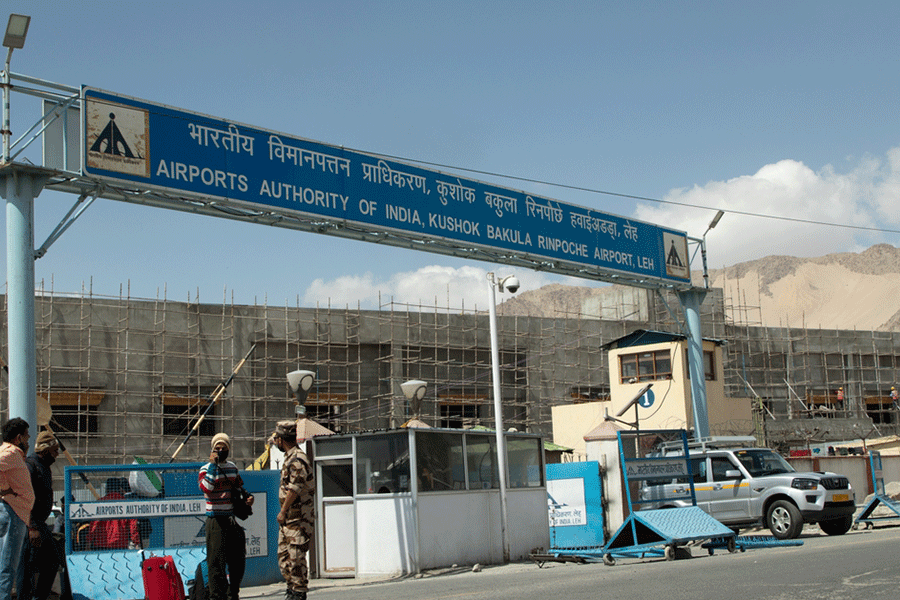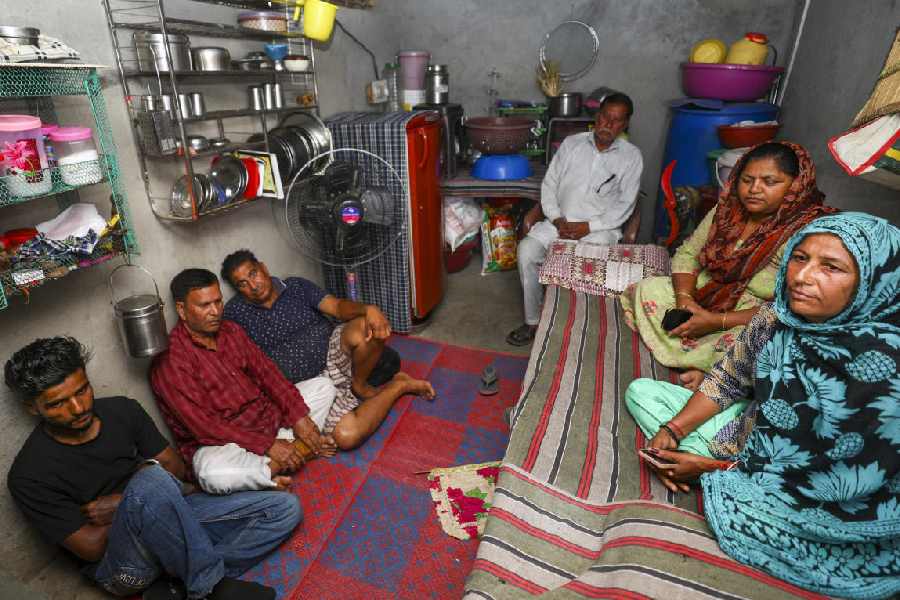 |
| Greenpeace activists at Dow’s European headquarters in Switzerland with 18 barrels of poisonous waste collected from Bhopal. (AFP file picture) |
Bhopal, Feb. 16: Almost two decades after the Bhopal gas tragedy, thousands of survivors living near the abandoned Union Carbide factory continue to suffer silently from the gas leak.
These survivors, mostly concentrated in Atal Ayub Nagar, J.P. Nagar and Arif Nagar, use water polluted by the toxins left behind by the US multinational.
Each day, about 4,500 patients queue up at government-run outpatient departments complaining of respiratory diseases, stomach ailments, dysentery and nervous system disorders.
The doctors at Hamida and Bhopal hospitals consider the inflow alarming for most of these ailments — some passed on to the second generation — can be traced back to methyl isocyanate (MIC) gas. It had killed 16,000 people in 1984 and permanently harmed more than five lakh.
Some 700 tonnes of toxic waste generated by Union Carbide, which now lie scattered and exposed in the factory premises, have worsened the sufferings of victims living nearby.
A Greenpeace scientific study in 1999 and some others by government agencies have confirmed the presence of several life-threatening poisons such as mercury and other heavy metals, chlorinated pesticides and pollutants in the scattered waste.
The Greenpeace study, which also analysed groundwater samples from the sources residents around the factory now use, revealed toxic pollutants, some of which were carcinogenic.
The investigation also found more than 20 tonnes of hexachlorocyclohexane in sacks lying in an open shed in the abandoned factory. HCH is a persistent organic pollutant and an environmental poison linked to immune-system and reproductive disorders.
According to a study conducted by the National Environmental Engineering Research Institute (Neeri), Nagpur, the factory area recorded a high concentration of toxic wastes, indicating the possibility of contamination at “higher depths”.
These facts and figures notwithstanding, the entire political class has been indifferent to the people’s demand for clean water and cleaning of the factory site and compensation for the victims.
The indifference is more glaring as Madhya Pradesh’s Congress chief minister Digvijay Singh has been honoured for being a “green chief minister”.
BJP’s Uma Bharti, representing the Bhopal parliamentary seat, is itching to oust Digvijay but she seldom takes up the cause of gas victims.
On Friday, a call attention motion was moved in the Assembly, but the person who moved it was absent as also most MLAs from all parties. The discussion that followed took place without quorum, with a dozen-odd legislators struggling to stay awake.
The Bhopal Gas Peedit Mahila Udyog Sanghatan is now planning to move court against the “conspiracy of silence”.
According to gas victims campaigner Abdul Jabbar, politicians, including minister in charge of gas relief and rehabilitation Arif Aqueel, the Bhopal municipal authority and Union Carbide would be made parties to the proposed case for letting life-threatening toxins lie scattered around the factory.
Residents of Atal Ayub Nagar, Arif Nagar, Chola and other slums have little choice but to drink the contaminated water as the only other source of water — provided by the Bhopal Municipal Corporation — is erratic in supply.










